Egg after hatching
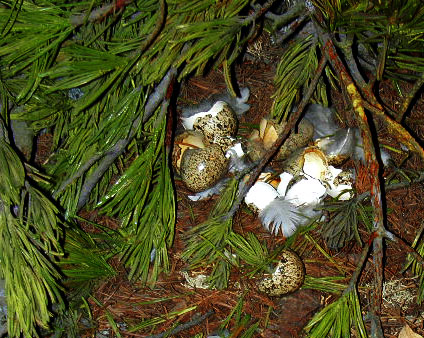 |
An eggshell after hatching.
Hatching = birth.
A female lays a last egg in the beginning of July,
and a female holds an egg immediately,
and it hatches between 20 - 23 days.
Young bird birth of a Lagopus mutus
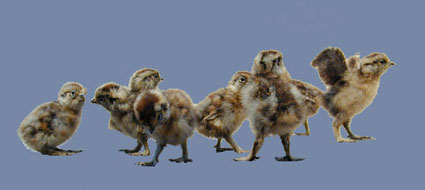 |
A young bird just after hatching is about 18g.
A voice of a young bird is "piyo piyo".
An average of 66.7% hatching.
A life rate until the beginning of October is 15-40%.
In about the middle of September,
a body of a young bird grows up into size same as female parent.
When October begins, a white feather grows.
A voice of a young bird is "piyo piyo" still.
Bring up a young bird
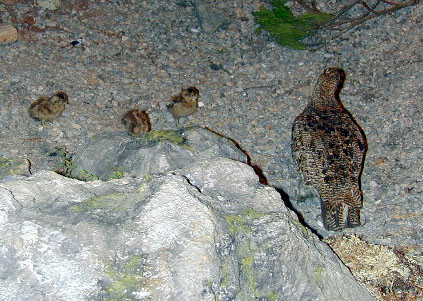 |
A male does not bring up a young bird at all,
and a female parent brings up a young bird.
A female parent takes a young bird to stock of an alpine plant such as an anemone,
Sieversia pentapetala, Phyllodoce aleutica becoming bait of a young bird and walks.
Natural enemy.
Mustela erminea, a fox, ten, an eagle, a falcon.
Broken-wing trick action.
When a natural enemy came close to a young bird,
a mother lowers a single wing of a mother
and does the movement that a wing is damaged as for the mother, and cannot fly.
"Aim at me" and a mother seem to tell movement of a mother.
A mother does [broken-wing trick action] to keep a young bird at the cost of the body.
Family life collapse.
The male which canceled territory after a young bird hatched is
separated from a family group and lives.
Both the male which was not a pair and a female enter joint life with
a male separated from a group of a family.
Molting (change a feather)
A color of a wing is replaced whether a Lagopus mutus adapted itself to environment of circumference.If you click this, there is a big photograph.
 |
A female of September, A male of September, A male of the end of October, A male of the middle of November, A male of the end of November,
A male of the beginning of January, A female of the beginning of February.
A feather of male of the breeding season has small brown light brown spots point of a wave pattern on the black ground
and it is black and can see it as the whole.
Nuptial coloration of male fades from the time that territory cancels and resembles a feather of a female.
A male does not open a red crest.
A female has side spots of yellowish-brown of breadth on the black ground and, as a whole, can see it in brown.
When September begins, a white feather of winter begins to grow, and a thick feather of winter goes along to the abdomen,
and both a female and a male can begin to see the feather which is white to the back in the beginning of October.
Molting becomes fast and, in the middle of October, becomes the spots design that a feather of brown was mixed in to a feather of white.
The winter season becomes a pure white feather, and the Lagopus mutus which there is on snow does not stand out,
and it seems to be protective coloration really.
A Lagopus mutus of the depth of winters is covered to a pure white feather except a nail of a foot, and it seems to be a foot of a rabbit.
Lagopus of Lagopus mutus is meaning of a foot of a rabbit.
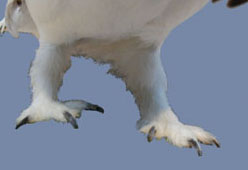 |
Lagopus mutus of a severe winter period
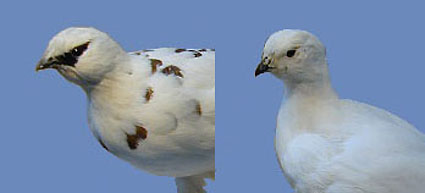 |
A Lagopus mutus of a cold winter period becomes a pure white feather
and is hard to distinguish a female from a male, but there is [The line which passes an eye] in a male (the left photograph),
and it is a feeling to be sharper than a female (a right photograph).
A Lagopus mutus between the severe winter season digs the hole where the whole of a body enters to a snowy field,
and a Lagopus mutus bears wind and snow of intense cold and waits for far-off spring.